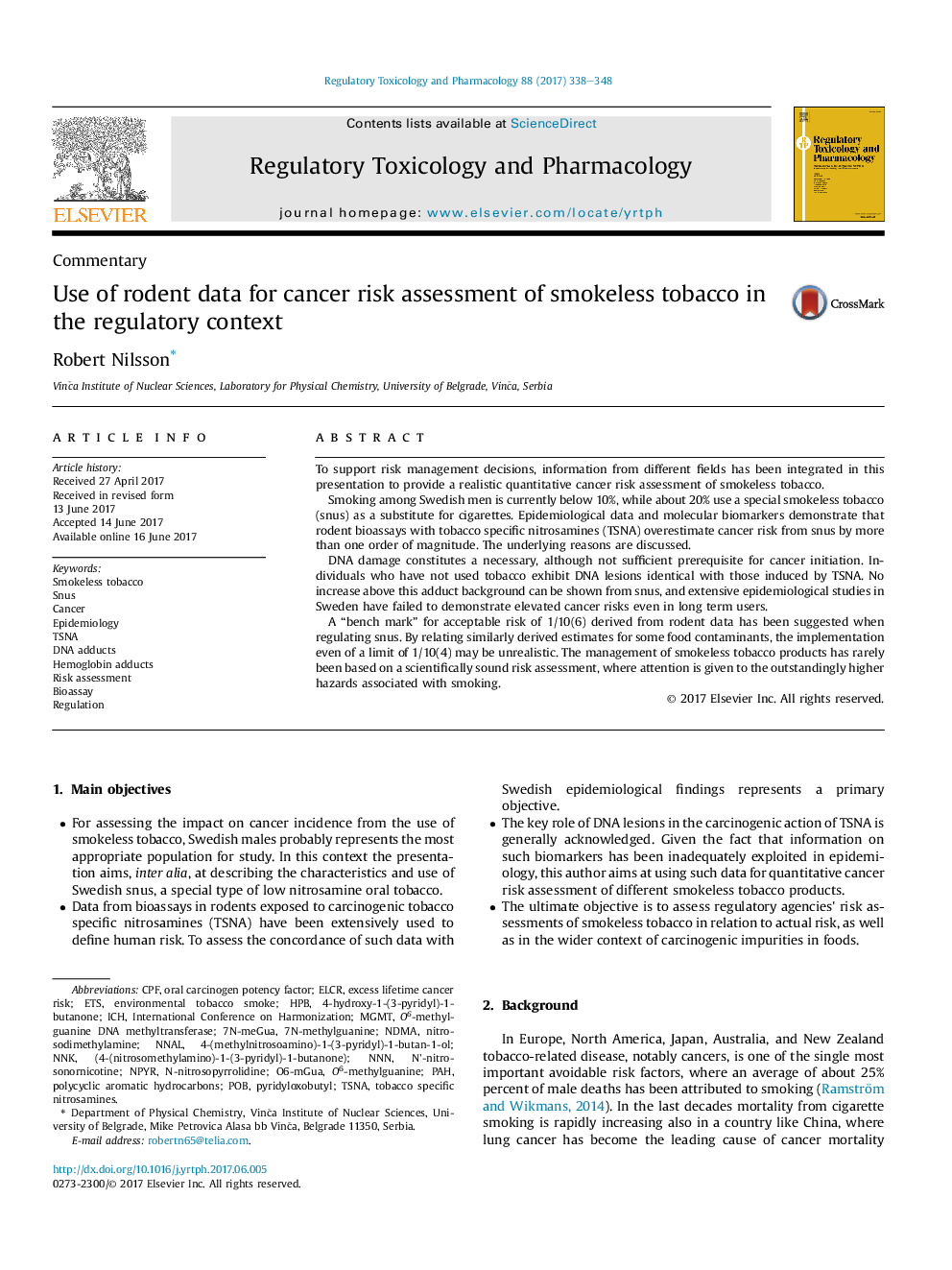| Article ID | Journal | Published Year | Pages | File Type |
|---|---|---|---|---|
| 5561138 | Regulatory Toxicology and Pharmacology | 2017 | 11 Pages |
â¢20% of Swedish males have replaced cigarettes with smokeless tobacco (snus).â¢Swedish epidemiological studies show that snus does not induce cancer.â¢Bioassays with tobacco specific nitrosamines (TSNA) give exaggerated risk estimates.â¢DNA adducts of the TSNA-type exist in individuals not exposed to tobacco.â¢No increase above the DNA adduct background can be expected from intake of snus.
To support risk management decisions, information from different fields has been integrated in this presentation to provide a realistic quantitative cancer risk assessment of smokeless tobacco.Smoking among Swedish men is currently below 10%, while about 20% use a special smokeless tobacco (snus) as a substitute for cigarettes. Epidemiological data and molecular biomarkers demonstrate that rodent bioassays with tobacco specific nitrosamines (TSNA) overestimate cancer risk from snus by more than one order of magnitude. The underlying reasons are discussed.DNA damage constitutes a necessary, although not sufficient prerequisite for cancer initiation. Individuals who have not used tobacco exhibit DNA lesions identical with those induced by TSNA. No increase above this adduct background can be shown from snus, and extensive epidemiological studies in Sweden have failed to demonstrate elevated cancer risks even in long term users.A “bench mark” for acceptable risk of 1/10(6) derived from rodent data has been suggested when regulating snus. By relating similarly derived estimates for some food contaminants, the implementation even of a limit of 1/10(4) may be unrealistic. The management of smokeless tobacco products has rarely been based on a scientifically sound risk assessment, where attention is given to the outstandingly higher hazards associated with smoking.
